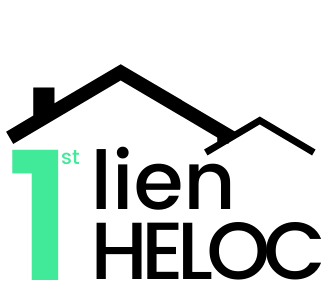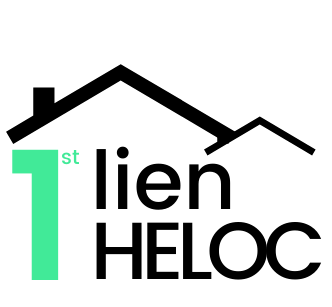The Math Behind Why You Should Use A 1st Lien HELOC to Consolidate Debt
Updated as of January 26, 2024 | FirstLienHELOC.com
Debt Consolidation 101:
If you’re currently engaged in consumer debt, whether an auto loan, credit card, or appliance financing, you might be paying a money on interest calculated at a higher interest rate than what you would get with a 1st Lien HELOC.
If your credit card calculates interest at 17% annually, and you maintain an average daily balance of more than $1000, you would pay $170 throughout the course of the year in interest. But with a 1st Lien HELOC at 6.8%, that same debt would only cost you $68, or less than half.
There are many other situations where these same rules apply. So why would you want to consolidate debt? To save money of course.
Why consolidate from a lower interest rate loan to a 1st Lien HELOC?
There are actually two main ways that could benefit you from consolidating consumer debt into a First Lien HELOC. They are, (a) reducing monthly interest costs by trading out high-interest debt for low-interest debt, and (b) increasing cashflow, and speeding up the payoff of your home, resulting in a faster payoff and lower overall interest costs.
Surprisingly, yet mathematically true in some scenarios, the second way can allow you to consolidate loans with lower interest rates into a higher-rate HELOC, and still result in a better outcome.
You can read about both ways to save money by consolidating debt into a First Lien HELOC below.
Reducing Monthly interest costs
At the most basic level, all things being equal with a loan (balance & term,) a loan with a lower interest rate will have a lower interest payment than a loan with a higher interest rate. So, one way to save money is to consolidate debt from a higher interest rate product to a lower interest rate First Lien HELOC.
For example, if you owe $10,000 on a credit card with a 19% interest rate, the monthly interest cost would be $158.33 ($1,900/year.) However, if you were to consolidate that $10,000 into the First Lien HELOC at a rate of 8%, the monthly payment would be $66.66 ($800/year.) So, in this scenario, consolidating the debt from the credit card to the HELOC would save you $91.66 per month, or $1,100 per year.
That’s a lot of savings just by moving debt from a higher-rate option to a lower rate option.
Increasing Cashflow to speed up the payoff of the house.
This particular benefit is a little more involved, so it warrants a little more foundational knowledge & explanation.
To fully understand this concept, we have to first know the following concepts:
Monthly Cashflow makes this strategy work: When you implement the Velocity Banking Strategy with a First Lien HELOC you’re using your all of your income after expenses to rapidly pay down your principal balance on the home. This means that the only thing that ever pays off the house each month is the monthly surplus; essentially the difference between the amount of money the household takes in and the amount that the household spends. So, the greater the surplus, the faster the payoff, and the lower the surplus, the slower the payoff.
“The greater the surplus, the faster the payoff”
Differences in the monthly cashflow swing the outcome much more than you’d expect: Most people assume that consolidating debt into the First Lien HELOC will slow it down, because the balance increases when you do so. What they forget though, is that the monthly cashflow also increases because that same debt consolidation removes the monthly payment from the budget. Increasing the monthly surplus can have a much greater positive effect on the loan than the negative effect created by increasing the balance. So, contrary to common knowledge, consolidating debt can actually result in a faster payoff time, and a lower interest cost than not consolidating debt.
“Consolidating debt can actually result in a faster payoff time and a lower interest cost…..”
Let’s look at an example:
John & Cindy’s balance on their First Lien HELOC is $340,000. Their household take-home pay is $12,000 and their total monthly spend is $7,000, so they’re depositing $12,000 into their First Lien HELOC, and taking $7,000 out to pay their bills before the interest payment. This $7,000 includes a car loan with a balance of $25,000, and a monthly payment of $500. The rate on their HELOC is 8.5%, and they pay $6,500 annually in homeowner’s insurance and taxes.
If they were to keep their car loan where it is and were consistent with this budget, they would pay off their home in 8 years and 11 months and pay $146,293 in total interest costs.
However, if they were to consolidate the car loan into their First Lien HELOC, two things would happen. First, the balance on their home would increase to $365,000, and second, their monthly liabilities would decrease to $6,500/month. If they were consistent with this budget, they’d end up paying off their home in 8 years and 4 months and would pay $143,852 in total interest. The choice to consolidate the car debt into the First Lien HELOC in this scenario shaves off 7 months of their payoff time and saves them over $2,000!!!
Most people tend to assume that the increase in the balance would result in a longer payoff time and higher interest costs. However, in this scenario removing the $500 monthly payment has a greater positive impact on the First Lien HELOC than the negative impact created by increasing the balance by $25,000!
So, all in all, consolidating debts into the First Lien can be extremely beneficial in terms of saving money and possibly paying off the house faster.
Key Considerations:
Financial Discipline: The borrower’s success with this example requires a disciplined approach to budgeting and cash flow management, as it involves directing a larger portion of income toward debt repayment.
Cash Flow Management: The HELOC’s sweep account feature simplifies cash flow management by automatically applying any surplus income to the loan balance, potentially reducing the need for meticulous budgeting and allowing for a more straightforward approach to accelerating debt payoff.
Total Interest Paid: The essence of the Velocity Banking strategy in this example is to significantly reduce the total interest paid over the life of the loan by shortening the loan term through larger and more frequent principal payments.
This comparison demonstrates the potential benefits of consolidating higher interest rate debts into a First Lien HELOC and aggressively paying down the balance using the Velocity Banking strategy. It’s important to note that while this strategy can lead to substantial savings in interest and a quicker payoff period, it requires a higher monthly payment and a disciplined approach to managing finances. This analysis underscores the importance of carefully considering loan terms, interest rates, and repayment strategies in personal financial planning.
Achieve Financial Freedom
Sign up on FirstLienHeloc.com to get connected with a licensed lender who can deliver an all-in-one 1st Lien HELOC. They’ll walk you through the application process and help outline your budget, your numbers, and exactly how much you can save by replacing your mortgage.

